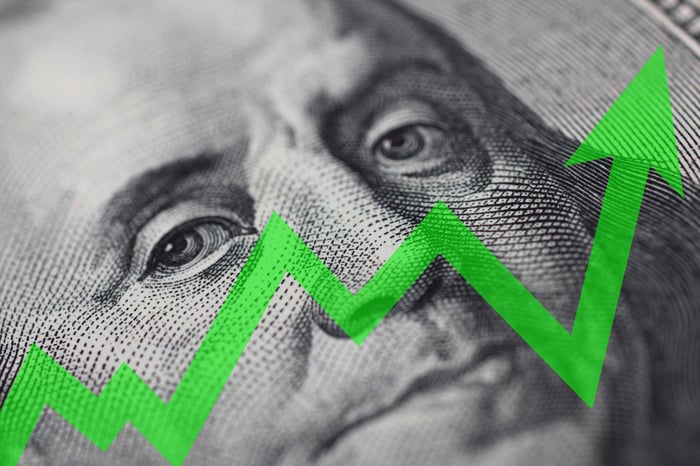Dan Ives, managing director and senior equity research analyst at Wedbush Securities, has been bullish on Palantir Technologies (PLTR -0.69%) since the company introduced its artificial intelligence (AI) platform in 2023. His target prices, consistently the highest on Wall Street, have frequently proven accurate.
For instance, Ives called Palantir the "best pure-play AI name" and the "gold standard in AI" in August 2023. His target at the time was $25 per share, and Palantir reached that price in February 2024. Ives by that point had raised his target to $30 per share, followed by $35 per share, $57 per share, and $75 per share; Palantir blew through those prices toward the end of 2024.
In August 2025, Ives raised his target price to $200 per share. That implies 10% upside from the current share price of $182. However, Ives also told CNBC that Palantir could be a $1 trillion company within two to three years. That implies 135% upside from its current market value of $424 billion. Shareholders would see annual gains between 33% and 54% if his forecast proves accurate.
Here's what investors should know about Palantir Technologies.

Image source: Getty Images.
Palantir is well positioned to benefit from commercial adoption of AI
Palantir develops analytics software for clients in the commercial and government sectors. Its core platforms (Gotham and Foundry) integrate data and machine learning (ML) models into a decision-making framework called an ontology. And its adjacent artificial intelligence platform (AIP) lets clients connect that data to large language models to build generative AI applications and automate processes.
Palantir currently earns most of its revenue from U.S. government agencies. The list includes the Department of Defense, Department of Homeland Security, FBI, and CIA. Revenue growth in the government segment has accelerated in six consecutive quarters, helped by widespread adoption of its Maven Smart System, which processes vast amounts of sensor data with AI to support targeting and logistics decisions.
However, most analysts see Palantir's commercial segment as the bigger opportunity. Dan Ives at Wedbush says enterprise use cases are exploding. And Mariana Perez Mora at Bank of America expects commercial revenue to compound at 41% annually to reach $10 billion by 2030, while government sales increase at 30% annually to reach $8 billion over the same period.
Importantly, independent analysts have ranked Palantir as a market leader in AI/ML platforms and decision intelligence software. That puts the company in a good position because data analytics spending is expected to grow at 29% annually through 2030, according to Grand View Research. And CTO Shyam Sankar says Palantir's ontology-based software positions the company to "uniquely deliver on AI demand."
Why Palantir may struggle to reach $1 trillion within three years
The most common argument among Palantir bears is valuation. Jefferies analyst Brent Thill has lauded the company's execution in recent quarters, but also said the "valuation doesn't make any sense" back when the stock traded at $90 per share. More recently, Thill warned that Palantir is the most expensive software stock by a wide margin, and no company has ever sustained a similar multiple.
Likewise, in a recent note, Mizuho analysts said Palantir deserves tremendous credit for its unique software, but they also warned a material multiple reversion was possible in the next few quarters, saying, "The stock's multiple remains extreme, dramatically above anything else in software."
Most Wall Street analysts share that outlook. The average target price of $158 per share implies 13% downside from the current share price of $182.
Here's the problem: Palantir trades at 133 times sales. That means investors are currently paying $133 for every $1 the company generated in revenue over the past year. In other words, if you bought the company outright at its current valuation, it would take 133 years to recoup your investment, even if you did not spend a cent on operating expenses. That is an absurdly expensive valuation.
Comparatively, the next closest company in the S&P 500 (^GSPC 0.32%) is AppLovin at 38 times sales. That means Palantir could lose 70% of its value and still be the most expensive stock in the index.
For that reason, I am very skeptical about the company achieving a $1 trillion market value within two or three years. It certainly could happen, but history says the valuation will eventually fall back to Earth.





